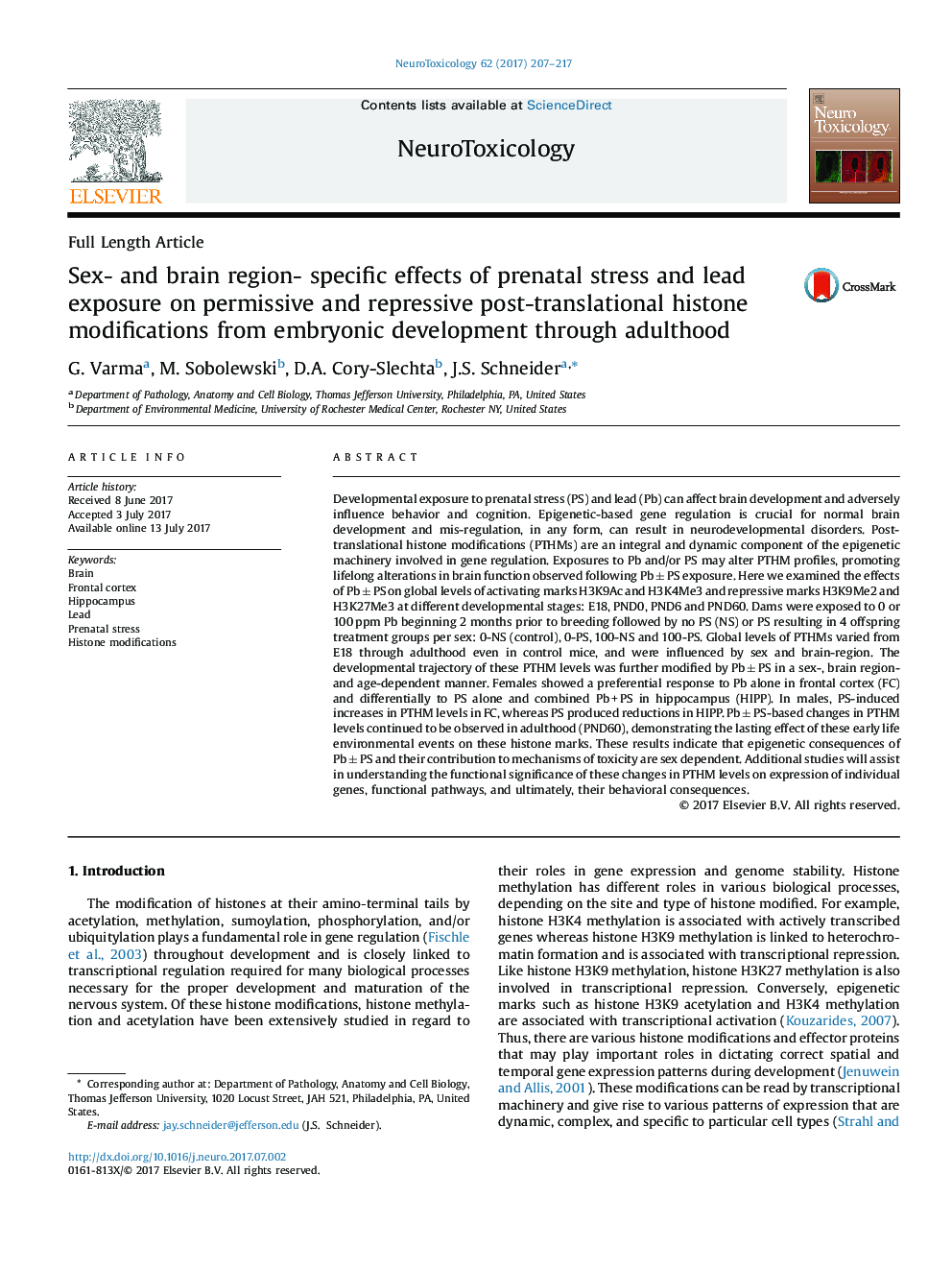| کد مقاله | کد نشریه | سال انتشار | مقاله انگلیسی | نسخه تمام متن |
|---|---|---|---|---|
| 5560805 | 1562032 | 2017 | 11 صفحه PDF | دانلود رایگان |
- Global PTHM levels change during normal brain development in mice.
- Early life Pb ± PS altered the developmental trajectory of PTHM levels.
- Exposure specific (Pb or PS or Pb + PS) alterations in PTHM levels were observed.
- Changes in global PTHM levels were sex, brain region and age dependent.
- Altered global PTHM levels persisted in adulthood.
Developmental exposure to prenatal stress (PS) and lead (Pb) can affect brain development and adversely influence behavior and cognition. Epigenetic-based gene regulation is crucial for normal brain development and mis-regulation, in any form, can result in neurodevelopmental disorders. Post-translational histone modifications (PTHMs) are an integral and dynamic component of the epigenetic machinery involved in gene regulation. Exposures to Pb and/or PS may alter PTHM profiles, promoting lifelong alterations in brain function observed following Pb ± PS exposure. Here we examined the effects of Pb ± PS on global levels of activating marks H3K9Ac and H3K4Me3 and repressive marks H3K9Me2 and H3K27Me3 at different developmental stages: E18, PND0, PND6 and PND60. Dams were exposed to 0 or 100 ppm Pb beginning 2 months prior to breeding followed by no PS (NS) or PS resulting in 4 offspring treatment groups per sex: 0-NS (control), 0-PS, 100-NS and 100-PS. Global levels of PTHMs varied from E18 through adulthood even in control mice, and were influenced by sex and brain-region. The developmental trajectory of these PTHM levels was further modified by Pb ± PS in a sex-, brain region- and age-dependent manner. Females showed a preferential response to Pb alone in frontal cortex (FC) and differentially to PS alone and combined Pb + PS in hippocampus (HIPP). In males, PS-induced increases in PTHM levels in FC, whereas PS produced reductions in HIPP. Pb ± PS-based changes in PTHM levels continued to be observed in adulthood (PND60), demonstrating the lasting effect of these early life environmental events on these histone marks. These results indicate that epigenetic consequences of Pb ± PS and their contribution to mechanisms of toxicity are sex dependent. Additional studies will assist in understanding the functional significance of these changes in PTHM levels on expression of individual genes, functional pathways, and ultimately, their behavioral consequences.
Journal: NeuroToxicology - Volume 62, September 2017, Pages 207-217
